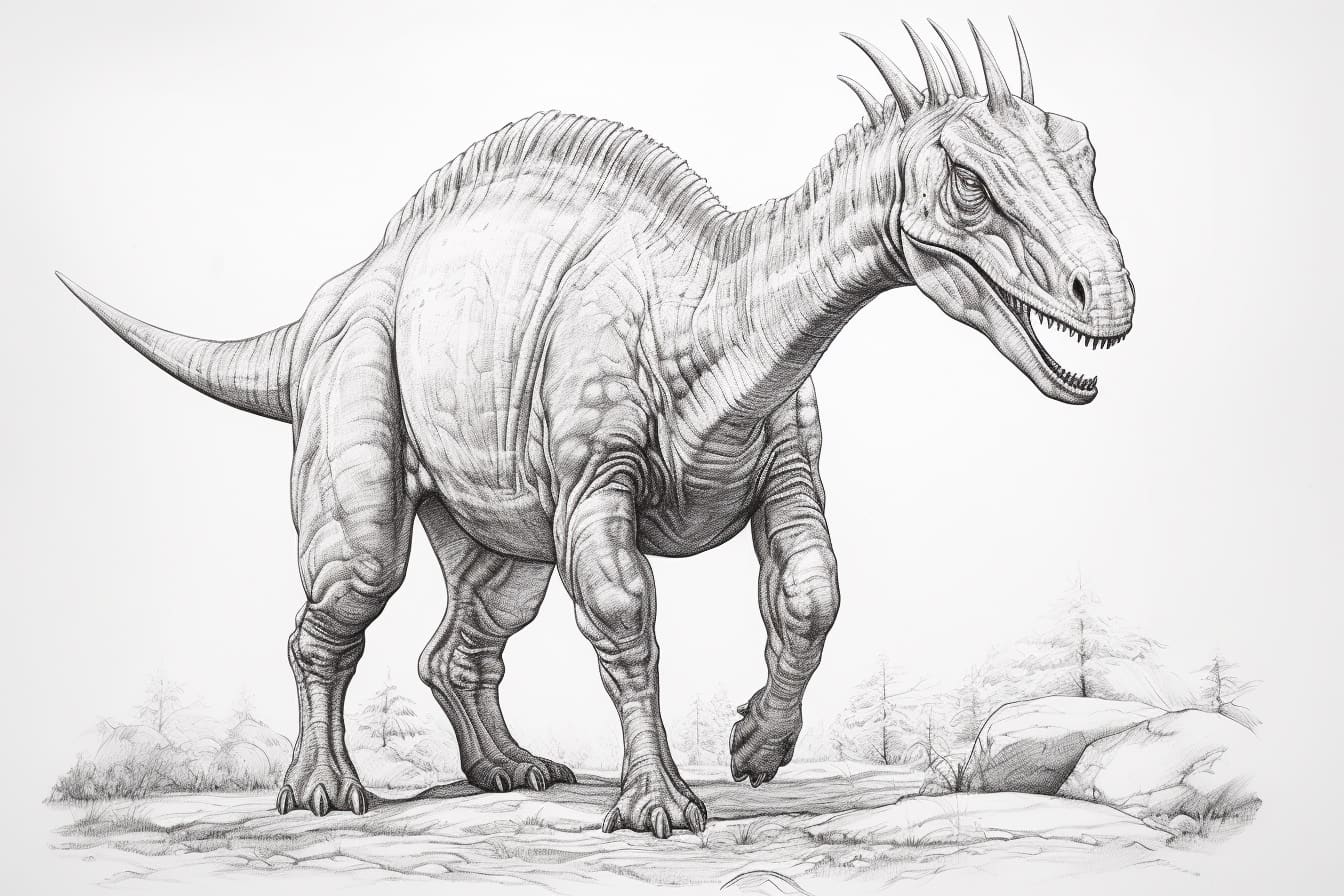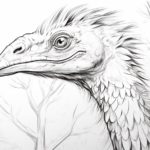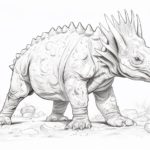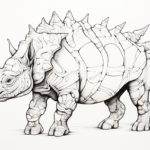Welcome to the exciting world of paleoart! Today, we will delve into the mesmerizing realm of dinosaurs by learning how to draw the majestic Parasaurolophus. With its distinct crest and long, sweeping tail, the Parasaurolophus is a fascinating subject for artists of all ages. By mastering the techniques of capturing the grace and power of this prehistoric creature on paper, you will not only hone your drawing skills but also unlock a window to a bygone era. So grab your pencils and let’s embark on a creative journey to bring the Parasaurolophus to life on the canvas!
Materials Required
To draw a Parasaurolophus, you will need the following materials:
- Pencil: To sketch out the basic shapes and features of the dinosaur.
- Eraser: To correct any mistakes or make adjustments to your drawing.
- Paper: A good quality drawing paper that can handle shading and details.
- Reference image: A picture or illustration of a Parasaurolophus to use as a guide.
- Colored pencils or markers: To add color and details to your drawing.
- Ruler: To help with drawing straight lines and proportions.
- Optional: Blending stump or cotton swabs for blending colors and creating smooth textures.
How to Draw a Parasaurolophus: a Step-by-step Guide
Step 1: Gather Your Materials
- Gather the necessary materials including a pencil, eraser, paper, and reference images of a Parasaurolophus for inspiration.
Step 2: Start with Basic Shapes
- Begin by lightly sketching the basic shapes that make up the body of the Parasaurolophus. Use ovals for the body, head, and limbs to establish the overall proportions.
Step 3: Add Details to the Head
- Focus on the head of the Parasaurolophus. Draw a long, curved shape for the distinctive crest on its head, which resembles a trumpet. Add details like the eye, nostril, and mouth to bring the head to life.
Step 4: Outline the Body and Limbs
- Refine the outline of the body and limbs based on the basic shapes you sketched earlier. Pay attention to the dinosaur’s posture and make adjustments as needed to capture its dynamic pose.
Step 5: Add Texture and Scales
- Enhance your drawing by adding texture and scales to the skin of the Parasaurolophus. Use curved lines to create the impression of scales and wrinkles, especially around joints and areas of movement.
Step 6: Refine Details and Features
- Take your time to refine the details of the Parasaurolophus, such as the claws on its feet, the patterns on its back, and any other distinctive features. Make sure to use your reference images to guide you in capturing the dinosaur’s unique characteristics.
Step 7: Shade and Add Depth
- Use shading techniques such as hatching and cross-hatching to add depth and dimension to your drawing. Pay attention to light sources and shadows to make your Parasaurolophus look more realistic and three-dimensional.
Step 8: Final Touches and Evaluation
- Take a step back and evaluate your drawing. Make any final adjustments or corrections as needed. Add any additional details or highlights to enhance the overall appearance of your Parasaurolophus drawing.
Step 9: Sign and Date Your Artwork
- Once you are satisfied with your drawing, sign and date it in a discreet corner. This not only marks your work but also allows you to track your progress as an artist over time.
Step 10: Share and Seek Feedback
- Share your Parasaurolophus drawing with others, whether it’s friends, family, or fellow art enthusiasts. Seek constructive feedback to help you improve your skills and continue growing as an artist.
Conclusion
In conclusion, drawing a Parasaurolophus can be a fun and rewarding experience for artists of all skill levels. By breaking down the process into simple shapes, focusing on proportions and details, and practicing regularly, anyone can create a realistic and captivating depiction of this fascinating dinosaur. Remember to experiment with different techniques, be patient with yourself, and most importantly, have fun bringing this prehistoric creature to life on paper!
Fun Facts About Parasaurolophuses
- Parasaurolophus is a genus of ornithopod dinosaur that lived during the Late Cretaceous Period, around 76-73 million years ago.
- One of the most distinctive features of Parasaurolophus is its long, hollow crest on top of its head, which could reach lengths of up to 6 feet (1.8 meters) in some species.
- The crest of Parasaurolophus is believed to have been used for communication, possibly for making loud, low-frequency calls to communicate with other members of its species.
- Parasaurolophus was a herbivorous dinosaur, using its duck-like beak to strip vegetation and feed on plants.
- Some scientists believe that Parasaurolophus may have lived in herds for protection against predators, as well as for social interaction.
- Parasaurolophus was a relatively large dinosaur, reaching lengths of up to 30 feet (9 meters) and weighing several tons.
- Fossilized skin impressions of Parasaurolophus suggest that it had scales covering its body, similar to modern reptiles.
- Parasaurolophus is one of the most well-known and easily recognizable dinosaurs, thanks to its unique crest and appearances in popular media such as movies and TV shows.
- Several species of Parasaurolophus have been identified, including P. walkeri, P. tubicen, and P. cyrtocristatus, each with variations in crest size and shape.
- Parasaurolophus is a favorite subject for dinosaur enthusiasts and paleontologists alike, sparking curiosity and fascination about the ancient world of dinosaurs.
Suggestions for Scenes and Settings for Parasaurolophus Drawings
Absolutely, here are some scene and setting suggestions for drawings featuring Parasaurolophus:
- Prehistoric Forest: Place your Parasaurolophus in a lush, dense forest filled with towering ferns, cycads, and other prehistoric plants. Add in some other dinosaurs in the background to create a dynamic and lively scene.
- Volcanic Landscape: Imagine a dramatic setting with an active volcano in the background, spewing lava and ash into the sky. Your Parasaurolophus could be depicted grazing peacefully in the foreground, creating a striking contrast between the tranquility of the dinosaur and the chaos of the volcano.
- Riverbank Gathering: Illustrate a scene where a herd of Parasaurolophus is gathered by a meandering river, drinking water and socializing. You can include reflections of the dinosaurs in the water to add depth to your drawing.
- Desert Oasis: Picture a desert landscape with a lush oasis in the middle, surrounded by palm trees and other greenery. Your Parasaurolophus can be shown seeking refuge from the scorching sun, enjoying the cool waters of the oasis.
- Ice Age Tundra: Transport your Parasaurolophus to a snowy, icy tundra environment reminiscent of the Ice Age. Include mammoths, sabertooth tigers, and other creatures from that era to create a dynamic and historically accurate scene.
- Cretaceous Beach: Place your Parasaurolophus on a sandy beach, with waves crashing in the background and pterosaurs flying overhead. You can add details like seashells, crabs, and other marine life to enhance the coastal atmosphere.
Remember to consider lighting, perspective, and composition to bring your scenes to life and make your Parasaurolophus drawings truly captivating. Experiment with different angles and viewpoints to create visually interesting and dynamic compositions. Have fun exploring these diverse settings and bringing your Parasaurolophus drawings to the next level!









